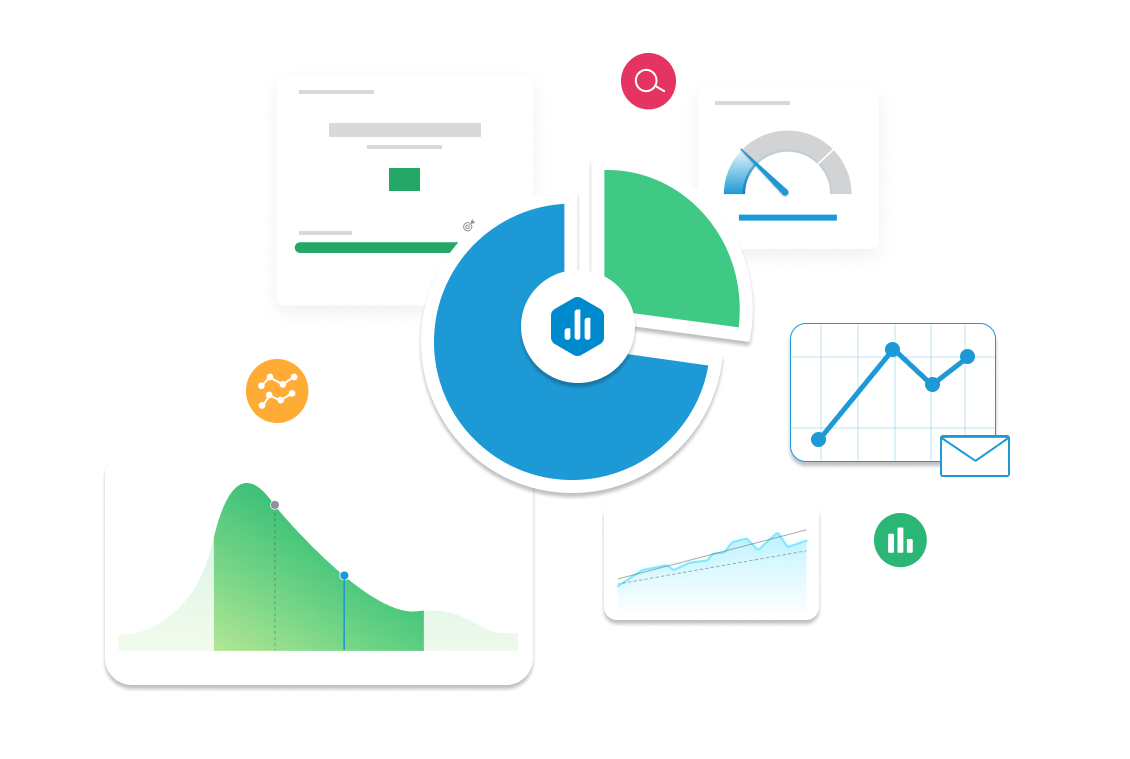Cost per Mille
Discover how Cost per Mille (CPM) measures the cost of 1,000 ad impressions. Learn how to track, analyze, and optimize CPM to maximize ad reach and budget efficiency.

| Category |
Marketing |
|---|---|
| Type |
Lagging Indicator |
| Calculation |
CPM = (Total Ad Spend / Total Impressions) × 1000 |
| Measure |
Tracks the cost of displaying an ad 1,000 times, helping businesses evaluate campaign efficiency and compare platform costs. |
| Data Sources: |
Google Ads, Facebook Ads, LinkedIn Ads, TikTok Ads, Microsoft Advertising, Twitter Ads. |
| Frequency |
Tracked daily or weekly to monitor ad costs and optimize budget allocation. |
Example target
Reduce CPM by 15% in Q3 by refining ad targeting, improving ad quality, and optimizing bidding strategies.
Example Reports Use Case
A Media Buyer tracks CPM to measure cost efficiency in display and social media campaigns. If CPM increases, they may adjust audience targeting, test different ad formats, or optimize creative assets.
What is Cost per Mille (CPM)
Cost per Mille (CPM) is a marketing metric that shows how much you pay to reach 1,000 people with an ad. “Mille” is Latin for thousand, so CPM literally means “cost per thousand impressions.” It’s commonly used in online advertising to measure how much exposure you’re getting for your money. If your ad is shown 1,000 times and you pay $5, your CPM is $5.
This KPI helps marketers understand the cost efficiency of brand awareness campaigns. It’s especially useful when the goal is to be seen like promoting a new product or building brand recognition rather than driving immediate clicks or sales.
The basic formula for CPM is:
CPM = (Total Ad Spend ÷ Total Impressions) × 1,000
CPM is easy to track and compare across platforms, which makes it a go to metric for planning and evaluating ad campaigns. It lays the foundation for deeper insights into ad performance and budget strategy.
How to Calculate Cost per Mille (CPM)
CPM is all about how much you spend to show your ad 1,000 times. There are a few ways to break it down depending on what you want to learn:
-
Basic CPM
This is the standard formula:
CPM = (Total Ad Spend ÷ Total Impressions) × 1,000
Example: If you spend $200 and get 50,000 impressions:
CPM = ($200 ÷ 50,000) × 1,000 = $4 -
Monthly CPM
Use this to compare performance month over month. Just plug in your spend and impressions for one month.
Example: $500 ad spend in March with 100,000 impressions = $5 CPM -
CPM by Channel
Break down CPM by where the ad ran (Facebook, YouTube, display ads).
Example: If Facebook cost $100 for 20,000 impressions:
CPM = ($100 ÷ 20,000) × 1,000 = $5
Why Cost per Mille (CPM) Matters
Cost per Mille (CPM) is a key metric for understanding how much it costs to get your brand in front of people. It’s especially valuable for awareness campaigns, where the goal is to be seen, not necessarily clicked. A low CPM means you’re reaching more people for less money, which can lead to better brand visibility and long-term growth.
Marketers use CPM to compare ad costs across platforms and campaigns. For example, if your Facebook ad has a CPM of $4 and your YouTube ad is $10, you know where you’re getting more exposure for your budget. It helps teams optimize spend, improve efficiency, and set realistic goals.
CMOs, performance marketers, and even executives should track CPM to assess campaign reach, budget impact, and advertising strategy. When reviewed regularly, CPM reveals patterns, helps refine targeting, and ensures you’re investing in the right channels to grow your brand effectively.
Related KPIs to Cost per Mille (CPM)
CPM is closely tied to other marketing metrics that measure the performance and efficiency of your ad campaigns. Looking at these together gives a fuller picture of how well your money is being spent.
CPM vs. Click-Through Rate (CTR)
CPM tells you how much it costs to show your ad, while CTR shows how many people actually click on it. If you have a low CPM but also a low CTR, your ad may not be effective. A high CPM with a high CTR might still be worth it if it drives results.
CPM vs. Cost per Click (CPC)
CPC is influenced by both CPM and CTR. If your CPM is $5 and CTR is 1%, your CPC is $0.50. Knowing all three helps you understand whether you’re paying more for visibility or actual engagement.
CPM vs. Conversion Rate
Even with a low CPM, if conversions are low, the overall campaign may not be successful. Tracking all three helps balance cost and performance.



